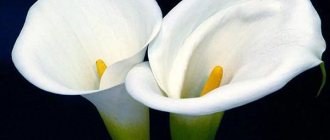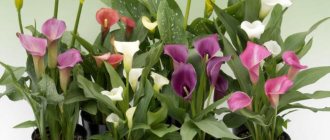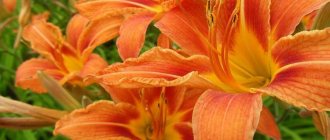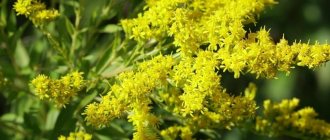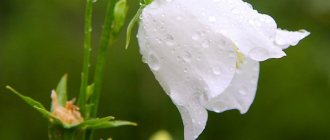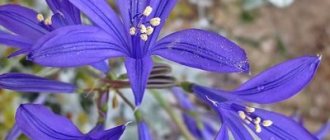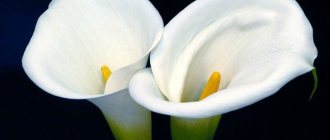Callas belong to the Araceae family. This plant is a perennial, grows in coastal and swampy areas, on the continents of Eurasia, North America and Africa, where a temperate and subtropical climate prevails.
For a flower, calla lilies have an unusual appearance, the stem length is about 80 cm. But this is not the limit, there are also taller varieties. The root system of the calliper is hollow rhizomes with shoots, the total length of which is from 60 to 90 cm. Bright green large leaves reach 30 cm in length, located near the rhizome. They are used in folk medicine as an anti-inflammatory agent.
Flowers similar to Calla lilies
There are two plants incredibly similar to Calla lilies - Spathiphyllum and Anthurium. They are just as beautiful and undoubtedly deserve attention.
Anthurium fire element. It blazes along with the red Calla, Spathiphyllium - “Snow White”. Its flower, as if descended from the mountain peaks, can boldly resist the whiteness of the bride’s dress.
All these plants (including Callas) belong to the Araceae genus. They arrived at the house of a man from the tropics: South America, Argentina, Paraguay and Mexico.
The toxicity of the azure flower
All parts of delphinium contain alkaloids, which determine its poisonous properties. The roots and fruits are especially poisonous. The composition of the poison is similar to that of curare.
Getting delphinium into the body is fraught with:
- Depression of the central nervous system.
- Damage to the gastrointestinal tract.
- Negative effects on the cardiovascular system.
- Vomiting, excessive saliva.
- Convulsions in the whole body or in certain parts of it.
- General muscle weakness.
- Death due to paralysis of the respiratory system.
Important! The most poisonous species are: Larkspur and cultivated garden plants.
Apply the flower as follows:
- Dyes for wool are made from some species.
- Delphinium is used to destroy harmful insects.
- It is used for medical purposes.
- Used by traditional healers.
Description of plants similar to calla lilies
In indoor floriculture, there are several types of plants similar to calla lilies.
Spathiphyllum
Spathiphyllum also belongs to the Araceae family. Depending on the variety, it grows from 50 to 150 centimeters in height. Its bright green or variegated foliage is collected in a basal tuft. It has an ovoid shape, in some varieties its structure resembles corrugation. The length ranges from 25 to 90 centimeters, and the width from 10 to 40 centimeters. A spathiphyllum flower consists of a yellow or greenish-colored spadix and a spathe.
Unlike calla lilies, the spathiphyllum cover has an oval shape and is located vertically. By the end of flowering, its white color turns greenish.
Anthurium
Anthurium is an evergreen plant belonging to the Araceae. It can reach more than a meter in height. Anthurium has shiny, tough, solid foliage of a dark green color. It is heart-shaped and up to 40 centimeters long. The flower spadix may be white, pink or yellow.
Unlike calla lilies, the bract, like the leaves of the plant, is heart-shaped and is located around the cob, perpendicular to it.
The blanket can be white, salmon, pink or purple. But, for some reason, today varieties that have only red flowers are most often grown. People often call them “tongues of fire”, “flamingo flowers” or “men’s happiness”. It is believed that anthurium gives a man strength and brings happiness and good luck to his home.
Zantedeschia
Zantedeschia, like callas, is a perennial flowering plant belonging to the Araceae. Its underground part can be either a rhizome or a bulb. Depending on the type, its bushes can produce stems from 50 centimeters to 1 meter in height.
The foliage of the plant is bright green in color and heart-shaped. The appearance of the flower resembles a calla lily. It consists of a yellow cob and, depending on the varietal variety, can be white, pink, greenish, yellow, cream with a lemon tint, lilac-cherry, dark purple.
Whitewing
Calla palustris is a member of the evergreen perennials of the Araceae family. It is a small compact plant about 30 centimeters tall. Its heart-shaped green foliage in some varietal specimens may be covered with white or yellowish spots. They have a length from 6 to 14 centimeters and a width from 5 to 11 centimeters. The ear of the calla lily, like that of calla lilies, is yellow in color. The inside of the bedspread is painted white, and the outside is greenish.
There are not many indoor flowers that look like calla lilies. But, in addition to the fact that they belong to the same family and have some visible similarities, they also have a number of clearly visible differences, for example, in the shape of foliage and bedspread. Therefore, having studied the features of their structure, you can easily determine their name. This will help determine their further content, which will contribute to the proper development and abundant flowering of plants.
Flower of death
“Callies are the flowers of death.”
Why are they called that? Calla is a poisonous plant. In its raw form, all its parts are poisonous - both for people and animals. There is evidence of poisoning of domestic animals on a massive scale. Calla lily juice can irritate the skin and cause inflammation. If the plant gets inside the body, it:
- weakens cardiac activity;
- provokes vomiting;
- causes convulsions;
- leads to a state of numbness.
When poisoning with calla lilies in animals, the following is observed:
- Damage to the nervous and digestive systems.
- Increased salivation.
- Trembling throughout the body.
- Increased or slow heart rate.
- Bloating of the rumen (one of the sections of the stomach).
Note! All symptoms can be fatal. Therefore, it is not surprising that calla lilies are called the flower of death.
Ethiopian calla (Zantedeschia aethiopica)
Calla Ethiopian is the largest variety of Zantedeschia for growing indoors. This species has large heart-shaped leaves and funnel-shaped inflorescences. During the dormant period, the foliage remains bright green, which increases the decorative appearance of the species.
The most famous varieties of Ethiopian calla lilies include:
- “Green Goddess” is a variety with white-green flowers and a short lemon-colored stamen.
- “Childsiana” - the variety blooms profusely with snow-white flowers with an orange center.
- “Amethyst” is a variety of purple calla lilies that are distinguished by their considerable height and delicate aroma.
- “Pearl” is a tall variety with light green leaves, the flowers are large, white, fragrant, with a greenish tint on the outside. Suitable for bouquets.
- "Albomaculata" - a large white flower with a candle shape and a light vanilla aroma.
- "Captain Chelsea" is a beautiful two-color variety. The bedspread is burgundy with a golden border. The leaves are dark green with silver dots.
- "Little Gem" - calla has white flowers of the original appearance. A flower that has not fully blossomed has a petal that curls like a funnel, with a bright yellow stamen in the middle. At the edge of the petal there is a greenish outgrowth-claw.
Problems with indoor calla lilies and their solutions
| Problem | Cause | Solution |
| The stems are stretched. | Not enough light, very warm. | Change the location, install additional lighting, lower the room temperature. |
| The plant does not bloom. | The rest period has not been maintained. | During wintering, stop watering and reduce lighting. Before flowering, fertilize. If the rhizome grows large, divide it or plant the tubers. |
| Fragility of petioles. | Lack of nutrition. | Fertilize every week with fertilizers containing nitrogen and superphosphate. |
| Plaque on the leaves. | Fungal disease powdery mildew or gray rot. | Treat the leaves with a solution of potassium permanganate or soda ash with soap. Spray with fungicidal preparations: Fundazol, Vecta, Topaz, etc. |
| Non-seasonal leaf shedding. | Root rot. | Reduce watering, replace the soil. |
Tuberous indoor callas
Callas sprouted from tubers, unlike those that feed on rhizomes, do not require high soil and air humidity, but do not tolerate drought well. It is optimal to carry out regular watering, avoiding waterlogging of the soil and preventing the soil from drying out, forming cracks.
The homeland of indoor plants is still South America. Thanks to the work of breeders, it became possible to grow the free-spirited beauty in pots on windowsills, without limiting oneself to snow-white varieties at all.
Elliott
When callas of this variety bloom, you can observe harmonious tints: the outer surface of the petal is light green, the inner surface is bright yellow. The variety blooms profusely, which cannot but please gardeners. The window sill will be a bright accent in the room for many summer months.
Aethiopica
The most popular variety of indoor plant is aethiopica. The flowering is distinguished by a dense funnel, widening towards the top. The flower stalk can reach a meter in height, with the right choice of pot and a sufficient amount of diffused light. White callas love moisture more than other varieties of tuberous representatives of this family. Therefore, to obtain abundant flowering, it is important to keep the soil in the pot moist.
Attention! If the top layer of soil looks dry, but already at a depth of 1 cm the soil is moist, there is no need to water the plant - this will lead to excess moisture, which can contribute to the rotting of the tuber.
Picasso
Calla variety Picasso is distinguished by the uneven color of the inner side of the petal. The core is colored purple, going deep, creating a contrasting background for the yellow cob of the core. The edges of the inner side and the entire outer surface are white. Growing calla lilies of this variety in a pot requires the presence of water in the tray. The room temperature should be close to 22˚C.
Odessa
Calla variety Odessa has won the hearts of lovers of wine shades. With sufficient lighting, it can acquire a dark ruby color, sometimes very close to black. Callas do not differ in flowering duration from the standard indicators of their relatives - from July to the first days of September, the flower will delight with its deep, rich color.
Attention! All tuberous and rhizomatous callas are not frost-resistant and are not able to withstand frost without outside help. Therefore, tuberous varieties are cleaned of dried leaves, the tuber is wrapped in cloth and stored in a ventilated container in a cool, dark place.
Mango
The variety got its name because the blooming calla lilies resemble mangoes in color. Sometimes it may even seem that someone has laid out the ripe fruits of a tropical plant among the greenery - this is how calla lilies bloom lusciously and give a subtle sweet aroma. A bright picture can be observed from the beginning of August, when the first petals appear. The rest of the spring-summer period, the plant increases its green mass in order to gain strength for luscious flowering.
This variety requires 12 hours of daylight, which ensures rich shade.
Callas Mix are the most adapted to apartment maintenance; they are also called the colored variety. They are less afraid of drafts and temperature changes, but still you should not intentionally create extreme conditions even for such a resistant variety, so as not to shorten the flowering period. The petal can take on several shades: from pink to purple. Callas of this variety are called mix because the flowering options are ambiguous.
Features of caring for and growing anthurium
Anthurium is considered a special plant, as it differs from its fellow Araceae family. It is distinguished for its exceptional aroma, but also for its abundant and beautiful flowering. Therefore, the plant needs special care.
Choosing a pot and soil
Surprisingly, Anthurium does not like large spaces. When choosing a pot, you should take this feature into account and make sure that the roots are as crowded as possible. If there is a lot of space, the plant will waste energy on root growth, while the soil will begin to oxidize, the tops of the leaves will be sparse, and there will be no flowering. It is better to choose a long pot, as the roots like to grow in length. Anthurium prefers oxygen-saturated soil, so it is replanted annually in the spring. The soil mixture is used with expanded clay. It is good when there is moss or peat in the soil. After transplantation, holes are made along the edge, this helps saturate the ground with oxygen, which promotes active flowering of the anthurium.
Required temperature
The flower comes from tropical places, so it loves warmth and humidity. Throughout the year, the temperature in the room must be maintained so that the flower does not fade and blooms profusely. The required temperature for Anthurium is from 20 to 28 degrees. Direct sunlight is harmful to the plant, so it should be protected from it. In winter, the temperature should be maintained between 13 and 22 degrees. To make the anthurium bloom faster, you can raise the temperature to summer standards. It is only important to take into account that the buds are formed at winter temperatures.
Air humidity
The plant came to us from a tropical area; it also likes high air humidity. It is necessary to provide the plant with good moisture. But the main thing is not to overdo it, otherwise the roots of the plant will begin to rot and it will simply die. To prevent the plant from being completely submerged in water, place moistened pebbles and a pot in the tray. This way the indoor plant will receive the necessary moisture. Also, the plant must be sprayed with a spray bottle, or the leaves must be wiped with a dampened cloth, while making sure that moisture does not get on the inflorescences. If the house has a humidifier, then it is better to place the flower next to it, and the humidity should be more than 75%. This creates a tropical effect for the anthurium.
Lighting
Light affects the flowering of a plant. If there is not enough natural light, the flower will look sluggish. Anthurium loves soft and diffused light. Anthurium is a very soft and delicate plant, so the sun can burn its leaves or even destroy it. The best location for anthurium will be windows facing east; a northwestern location is also suitable. If there are none, the plant can be placed in partial shade. In winter, the flower can be placed on a south window, this will compensate for the lack of light.
Bloom
To make “male happiness” bloom and delight with its beauty, you have to work hard. The plant is very picky about caring for itself; it must always be kept in suitable conditions. In addition, the plant loves feeding. Therefore, let’s consider a few basic rules that will help with care:
- It is better to water the plant with settled water. Do not leave water in a bottle on the windowsill, do not allow it to bloom. You can water the plant with melted snow in winter, rainwater in summer.
- Since the flower loves moisture, and it is not easy to maintain it without allowing the roots to rot, sphagnum is placed on the surface of the soil, which helps prevent the soil from drying out.
- If in the summer there is only a south window, then it is better to darken the place where the anthurium will stand, or move the plant to the corner of the window sill.
- “Male happiness” is very light-loving, so in winter it is necessary to help the plant with a table lamp or diode strip.
- The plant does not like to be moved, so it can only be moved 2 times a year in spring and autumn.
- If the flower begins to bloom, protect it from the sun so that the rays do not hit the leaves.
- During flowering, watering increases, and the leaves are regularly sprayed or wiped with a damp cloth.
Reproduction
Plant propagation must be done very carefully, as there is a risk of destroying the plant. People who do not have experience in this matter should not engage in reproduction on their own.
- By rooting the top of the plant
- Dividing the roots of the maternity bush
Trimming
Pruning is necessary for the plant; it is a way to rejuvenate the plant and allow new shoots to sprout. Pruning is carried out after flowering, since the buds have withered and lost their viability and must be removed. This can be done with a small pruning shears or a sharp knife. The bud is cut off at the very base, and the fresh cut is sprinkled with activated carbon. You can also wait until the bud is completely dry and then it can be easily removed from the flower. Anthurium is an incredibly beautiful plant. The beauty of the buds of this plant is indescribable. Requires a reverent and attentive attitude. You shouldn't buy a flower if you don't like caring for indoor flowers.
Flowers that look like calla lilies
Indoor plants serve as a real decoration for the home and give it comfort and elegance, but in addition to their aesthetic function, they also serve as air purifiers. Indoor flowers with snow-white buds look especially elegant and delicate.
Overview of species
Indoor plants with white flowers are quite numerous and varied. They differ in both appearance and care requirements, but they are united by the white color of their buds.
Azalea
At home, this evergreen shrub grows no higher than 50 cm. Thanks to its lush and long-lasting flowering, the plant has gained extreme popularity. Large azalea buds are simple and double, the leaves are lanceolate, densely pubescent on the reverse side and located on branched shoots. Two varieties are most suitable for home cultivation: Melina (Japanese) and Stella Maris (Indian).
- The Japanese one has a more compact size and a highly decorative appearance; the entire bush is densely strewn with small buds. They can grow either singly or in inflorescences.
- Indian has dark green oval leaf blades and rather large buds. The central petals are strewn with crimson splashes. Flowers can be of different types: simple, double or corrugated.
Gardenia
The evergreen plant can grow either as a compact bush or as a tiny tree. In an apartment, the flower reaches a maximum height of 70-100 cm. Dense small leaves have a glossy surface with pronounced venation and grow in 2 or 3 pieces. The flowers are tubular, with a pronounced pleasant aroma. The most popular variety is the jasmine gardenia.
Large white-cream buds smell strongly of jasmine and form corymbose inflorescences of 4-6 pieces.
The plant belongs to vines, so it needs support. The leaf blades are oval in shape, at first they have a glossy surface and then become matte. The buds are not particularly large, but have an unusual star-shaped shape and form small inflorescences. The flowers are mainly white, but in the middle they acquire red or crimson shades. The following varieties of hoya are suitable for growing indoors: green, beautiful, motoskei.
Spathiphyllum
This striking representative of the aroids is distinguished by a very impressive appearance and the absence of pronounced shoots, very similar to calla lilies. Elongated leaf blades grow almost from the root. The flowers also have a rather unusual appearance: on the flower arrow there is a yellow spadix, wrapped in a white blanket of wide petals. The plant has many varieties, both tall and dwarf.
Among them the most famous are: “Abundantly Flowering”, “Picasso”, “Chopin”, “Sensation”, “Cannoleaf”.
White orchid
The plant is distinguished by a thick stem on which large buds grow. White flowers are rare; most often the petals have an edging or inclusions of a different color. The most popular varieties with white petals include the following:
- “Royal” is distinguished by large flowers, about 15 cm in diameter;
- "Vanda" is characterized by long flowering and a pleasant caramel scent of small flowers;
- “Butterfly” is distinguished by unusual petals, shaped like insect wings;
- "Heron" has flowers that resemble a bird in flight.
Stephanotis
Of the many plant species, only Stephanotis floribunda, a profusely flowering liana, is cultivated. The small leaves are oval in shape and have a glossy surface. The stems are quite flexible, although thick, and can easily be formed into a bush on supports. The flowers consist of 5 petals, have a waxy surface and are collected in small bunches.
Plumeria
The plant is noteworthy for its unusual aroma, which is more intense in the morning and becomes weaker in the evening. It combines citrus and jasmine scents with notes of lily of the valley and spices.
Indoor plumeria can grow up to 2 m and can look like a bush or tree.
The leaf blades are quite large, the surface below has white pubescence. The flowers are small, with five petals, the center of which is bright yellow.
Larkspur in medicine
In folk medicine it is used in the form of:
- compresses – for bone fractures, eye inflammation;
- decoction - for burns, female diseases, jaundice;
- tinctures - for stomach diseases, pleurisy, whooping cough, fear;
- ointments – against parasites (lice and nits);
- rinse for sore throats.
Note! Due to the toxic substances contained in larkspur, you need to be very careful and not use them for treatment at home without consulting a doctor.
In official medicine, drugs from delphinium have the following effects:
- anesthesia;
- neutralization of microorganisms;
- relaxation.
Preparations from larkspur are prescribed for Parkinson's disease, paralysis, and multiple sclerosis.
